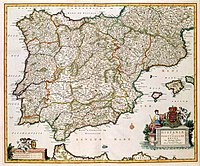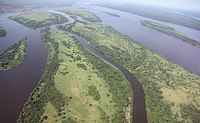
Aggressive or funerary cannibalism? Skull-cup and human bone manipulation in Cueva de El Toro (Early Neolithic, southern Iberia).
Sign Up to like & getrecommendations! Published in 2019 at "American journal of physical anthropology"
DOI: 10.1002/ajpa.23805
Abstract: OBJECTIVE We analyze the processing sequence involved in the manufacture of a skull-cup and the manipulation of human bones from the Early Neolithic of Cueva de El Toro (Málaga, Spain). MATERIALS AND METHODS The Early… read more here.
Keywords: early neolithic; cannibalism; cueva toro; skull cup ... See more keywords

Maternal hatching synchronization in a subsocial burrower bug mitigates the risk of future sibling cannibalism
Sign Up to like & getrecommendations! Published in 2018 at "Ecology and Evolution"
DOI: 10.1002/ece3.3894
Abstract: Abstract Sibling cannibalism—the killing and consumption of conspecifics within broods—carries a high risk of direct and inclusive fitness loss for parents and offspring. We reported previously that a unique vibrational behavior shown by the mother… read more here.
Keywords: sibling cannibalism; synchronous hatching; burrower bug; cannibalism ... See more keywords

Predator cannibalism can shift prey community composition toward dominance by small prey species
Sign Up to like & getrecommendations! Published in 2022 at "Ecology and Evolution"
DOI: 10.1002/ece3.8894
Abstract: Abstract Cannibalism among predators is a key intraspecific interaction affecting their density and foraging behavior, eventually modifying the strength of predation on heterospecific prey. Interestingly, previous studies showed that cannibalism among predators can increase or… read more here.
Keywords: insects; cannibalism; predation; cannibalism among ... See more keywords

Low levels of cannibalism increase fitness in an herbaceous tortrix moth
Sign Up to like & getrecommendations! Published in 2018 at "Behavioral Ecology and Sociobiology"
DOI: 10.1007/s00265-018-2439-0
Abstract: Cannibalism is relatively common in herbaceous insects, but studies looking at life-history traits on conspecific versus herbaceous diets reveal a mix of outcomes. In some taxa, fitness is highest on a conspecific diet, but in… read more here.
Keywords: levels cannibalism; cannibalism; tortrix moth; fitness ... See more keywords

Does sexual cannibalism secure genetic benefits of polyandry in a size-dimorphic spider?
Sign Up to like & getrecommendations! Published in 2020 at "Behavioral Ecology and Sociobiology"
DOI: 10.1007/s00265-020-02890-5
Abstract: Females mate multiply despite numerous costs. It is well established that polyandry can result in sexual conflict, favoring male adaptations that prevent sperm competition often to the disadvantage of the female. Such adaptations are extreme… read more here.
Keywords: spider; benefits polyandry; sexual cannibalism; cannibalism ... See more keywords

The effects of food level and conspecific density on biting and cannibalism in larval long-toed salamanders, Ambystoma macrodactylum
Sign Up to like & getrecommendations! Published in 2017 at "Oecologia"
DOI: 10.1007/s004420100641
Abstract: Previous studies have examined abiotic and biotic factors that facilitate agonistic behavior. For larval amphibians, food availability and conspecific density have been suggested as important factors influencing intraspecific aggression and cannibalism. In this study, we… read more here.
Keywords: food level; larval; cannibalism; density ... See more keywords

Positive temperature effects on the initiation and intensity of cannibalistic behaviour of larval pike, Esox lucius L. Is cannibalism reflected in otolith fluctuating asymmetry?
Sign Up to like & getrecommendations! Published in 2020 at "Hydrobiologia"
DOI: 10.1007/s10750-020-04328-5
Abstract: Cannibalism can be a significant factor limiting the survival of pike, Esox lucius, early life stages in both natural and aquaculture conditions. In the present research, type I cannibalism was studied in pike larvae (size… read more here.
Keywords: intensity cannibalistic; fluctuating asymmetry; cannibalism; size ... See more keywords

Kin Recognition and Egg Cannibalism by Drosophila melanogaster Larvae
Sign Up to like & getrecommendations! Published in 2020 at "Journal of Insect Behavior"
DOI: 10.1007/s10905-020-09742-0
Abstract: Cannibalism is a widespread behavioral phenomenon that is often thought to be an adaptive plastic response to limited environmental resources. However, cannibalism can potentially come at a fitness cost to an individual if one consumes… read more here.
Keywords: cannibalism; recognition; drosophila melanogaster; larvae ... See more keywords

Who eats whom, when and why? Juvenile cannibalism in fish Asian seabass
Sign Up to like & getrecommendations! Published in 2017 at "Aquaculture and Fisheries"
DOI: 10.1016/j.aaf.2016.12.001
Abstract: While juvenile cannibalism plays an important role in the evolution of organisms in natural populations, it is a serious problem in aquaculture. A number of genetic and environmental factors result in different rates of cannibalism.… read more here.
Keywords: cannibalism fish; cannibalism; juvenile cannibalism; kin discrimination ... See more keywords

Paternal investment with an uncertain future: effects of predator exposure on filial cannibalism and nesting behaviour
Sign Up to like & getrecommendations! Published in 2017 at "Animal Behaviour"
DOI: 10.1016/j.anbehav.2017.07.024
Abstract: Owing to trade-offs between investment in current and future reproduction, factors that diminish a parent's survival prospects, such as predation threat, are expected to increase investment in existing young. Nevertheless, effects of predation risk on… read more here.
Keywords: predator exposure; investment; cannibalism; filial cannibalism ... See more keywords

From cannibal to caregiver: tracking the transition in a cichlid fish
Sign Up to like & getrecommendations! Published in 2018 at "Animal Behaviour"
DOI: 10.1016/j.anbehav.2018.03.003
Abstract: Although the consumption of one's own offspring is often viewed as maladaptive, under some circumstances this behaviour can be a beneficial way to terminate parental care. When the costs of providing care are extremely high… read more here.
Keywords: cichlid fish; transition; cannibal; cannibalism ... See more keywords